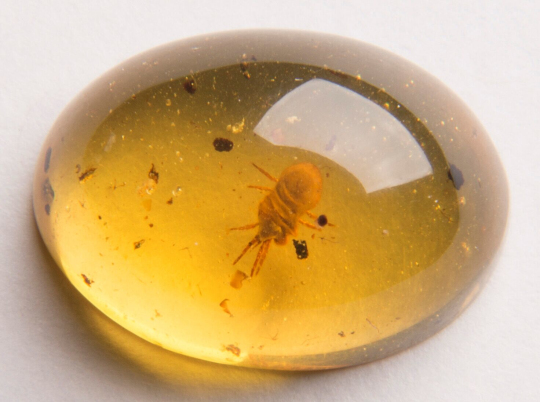Commercial exploitation of amber deposits is limiting the availability of this fossilized tree resin and its ancient biological contents to science, a group of Chinese scientists has warned.
The scientists have been collecting amber about 100 million years old from the swamps of northern Myanmar, and are working to extract the DNA of insects and plants preserved in it. Their work is detailed in the latest edition of the journal Science.
"Research into the amber stones will possibly unveil the origins and evolutions of several species," said GAO Lizhi, a researcher at the Kunming Institute of Botany, Chinese Academy of Sciences.
Burmese amber, or burmite, was formed in the early Cretaceous period, when the first flowering plants were beginning to grow.
But mining and sale of burmite is unregulated. "We need to protect these valuable stones before their commercial exploitation exhausts them," GAO said. (Xinhua)

Biological inclusion sealed in a piece of Burmese amber (Image by GAO Lizhi and WANG Shuo)
Contract:
Prof. Dr. GAO Lizhi
Germplasm Bank of Wild Species
Kunming Institute of Botany, Chinese Academy of Sciences
Email: lgao@mail.kib.ac.cn




